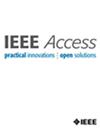Assessing Driving Risk Level: Harnessing Deep Learning Hybrid Model With Intercity Bus Naturalistic Driving Data
IF 3.4
3区 计算机科学
Q2 COMPUTER SCIENCE, INFORMATION SYSTEMS
引用次数: 0
Abstract
Driving risk assessment is crucial for enhancing traffic safety, especially given the severe consequences of highway accidents. This study advances the field by developing a deep learning hybrid model for time series analysis to categorize driving risks into low, moderate, and high levels. By collecting naturalistic driving data from intercity buses, the model is trained on an extensive dataset featuring 27,057 journey-based instances, incorporating dynamic GPS data and static journey background information from over 300 drivers. The model’s effectiveness is highlighted by its outstanding weighted average F1-score of 0.932, indicating exceptional robustness and predictive accuracy. Through comprehensive feature engineering and examinations of three temporal neural models, this research identifies the best parameter configurations. The key finding is that including static journey background information leads to improvements by 8.8% on average in model performance. Additionally, the high-risk level prediction F1-score reaches 0.728 for the proposed model, which is up to 9.3 times better than the performance of the machine learning baseline model. This breakthrough in driving risk prediction not only represents a major advancement in traffic safety management but also has practical implications for fleet scheduling management among transportation companies in the future. By applying this model, companies can enhance passenger safety and comfort, showcasing the significant potential of deep learning in real-world applications.求助全文
约1分钟内获得全文
求助全文
来源期刊

IEEE Access
COMPUTER SCIENCE, INFORMATION SYSTEMSENGIN-ENGINEERING, ELECTRICAL & ELECTRONIC
CiteScore
9.80
自引率
7.70%
发文量
6673
审稿时长
6 weeks
期刊介绍:
IEEE Access® is a multidisciplinary, open access (OA), applications-oriented, all-electronic archival journal that continuously presents the results of original research or development across all of IEEE''s fields of interest.
IEEE Access will publish articles that are of high interest to readers, original, technically correct, and clearly presented. Supported by author publication charges (APC), its hallmarks are a rapid peer review and publication process with open access to all readers. Unlike IEEE''s traditional Transactions or Journals, reviews are "binary", in that reviewers will either Accept or Reject an article in the form it is submitted in order to achieve rapid turnaround. Especially encouraged are submissions on:
Multidisciplinary topics, or applications-oriented articles and negative results that do not fit within the scope of IEEE''s traditional journals.
Practical articles discussing new experiments or measurement techniques, interesting solutions to engineering.
Development of new or improved fabrication or manufacturing techniques.
Reviews or survey articles of new or evolving fields oriented to assist others in understanding the new area.
 求助内容:
求助内容: 应助结果提醒方式:
应助结果提醒方式:


